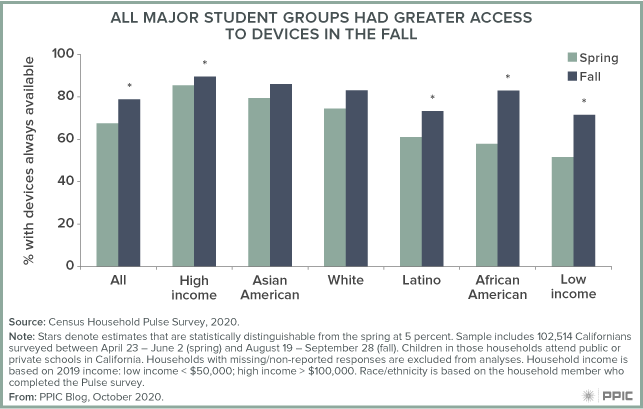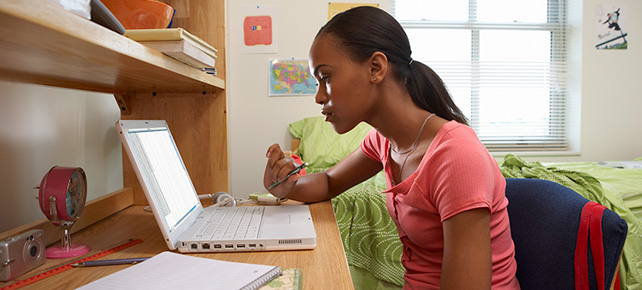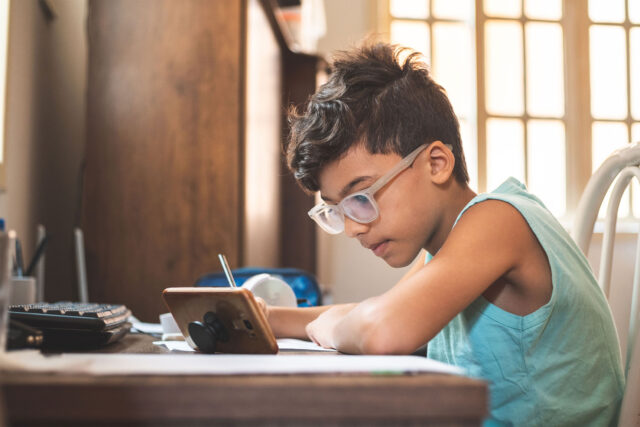California’s digital divide created problems for many students during remote instruction last spring—and it continues to impede student learning this fall. Since the onset of the pandemic, the state has invested in a patchwork of efforts to address disparities and mitigate learning loss. These investments have helped improve student access to digital devices at home, but internet access remains a formidable challenge for many families.
The good news is that the share of California students who always have a device available for educational purposes increased substantially, rising from 67% in the spring to 79% in the fall. Findings are based on the US Census Bureau’s Pulse household survey, with fall data referring to late August and September.
All major student groups had increased access to digital devices, with more pronounced gains among African American and low-income students: 43% more African American students and 39% more low-income students had reliable access to devices in the fall compared to spring. Latino students also experienced a significant increase in access—though they still have less access to devices than other racial/ethnic groups. Gains are at least partially the result of state and district efforts, as more students reported relying on devices from their schools or districts.

However, California families still report difficulty with reliable access to the internet. Only African American students experienced substantial gains: in the fall, 76% of African American students always had internet available, up from 61% in the spring. Unfortunately, the digital divide remains largely unchanged across major student groups. More than 30% of Latino students still lack reliable internet at home, as do nearly 40% of low-income students.

Access to devices has improved, but devices are of limited use without internet. About one-third of California students currently lack access to both a reliable internet connection and a digital device. Many internet service providers offer discounted programs for eligible families. But these programs are likely insufficient, given the economic instability brought on by the pandemic, which has had a disproportionate impact on low-income communities and communities of color struggling to meet their basic needs.
There is still a long way to go to ensure that all students—especially low-income, African American, and Latino students—can fully participate in distance learning. It is imperative that state and local policymakers find a remedy to guarantee adequate internet access for all students learning remotely. Direct subsidies to low-income families and expanding available wi-fi hotspots would help address some of the need. Additional federal support and funding beyond the CARES Act will also be critical to ensure the necessary conditions for student learning during these extraordinary circumstances.






